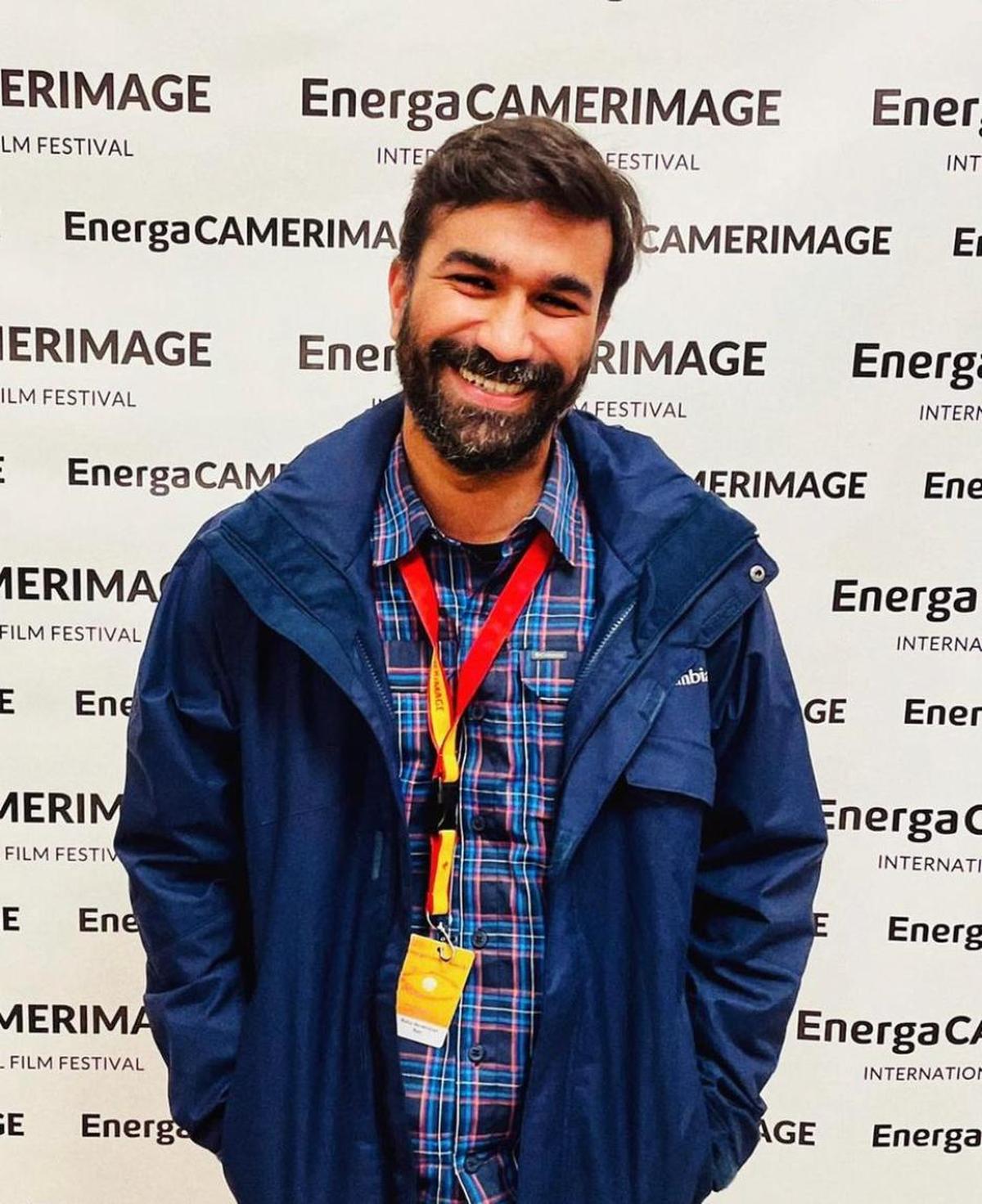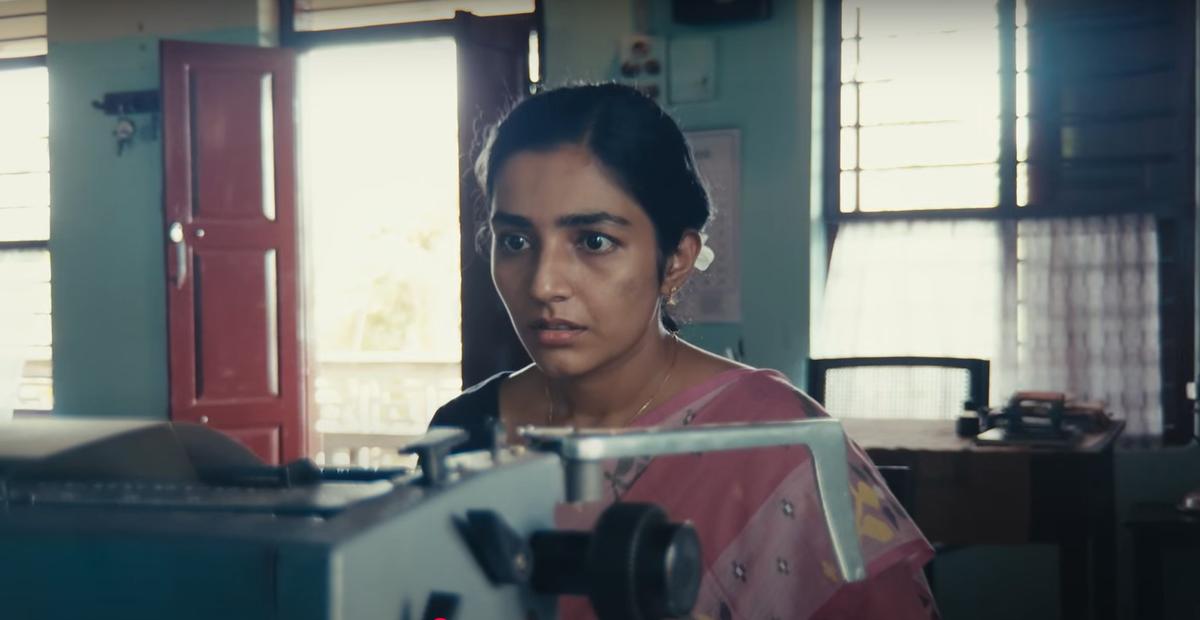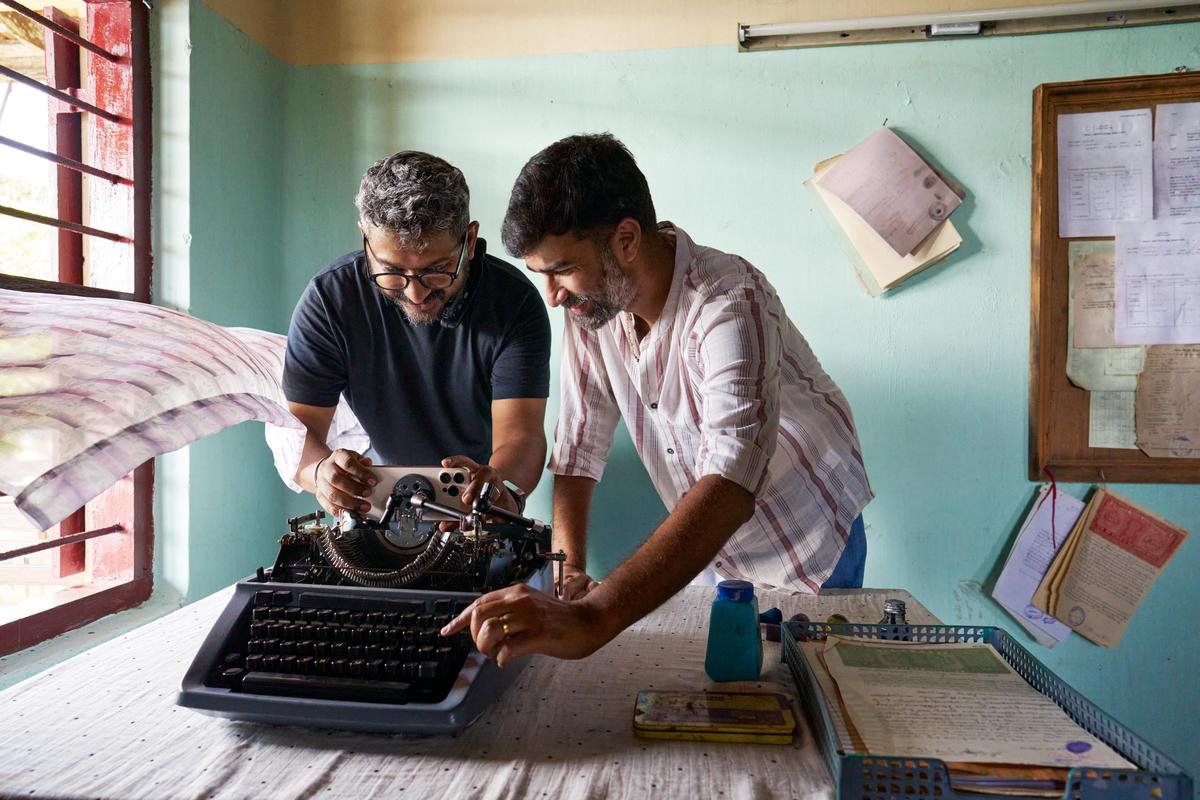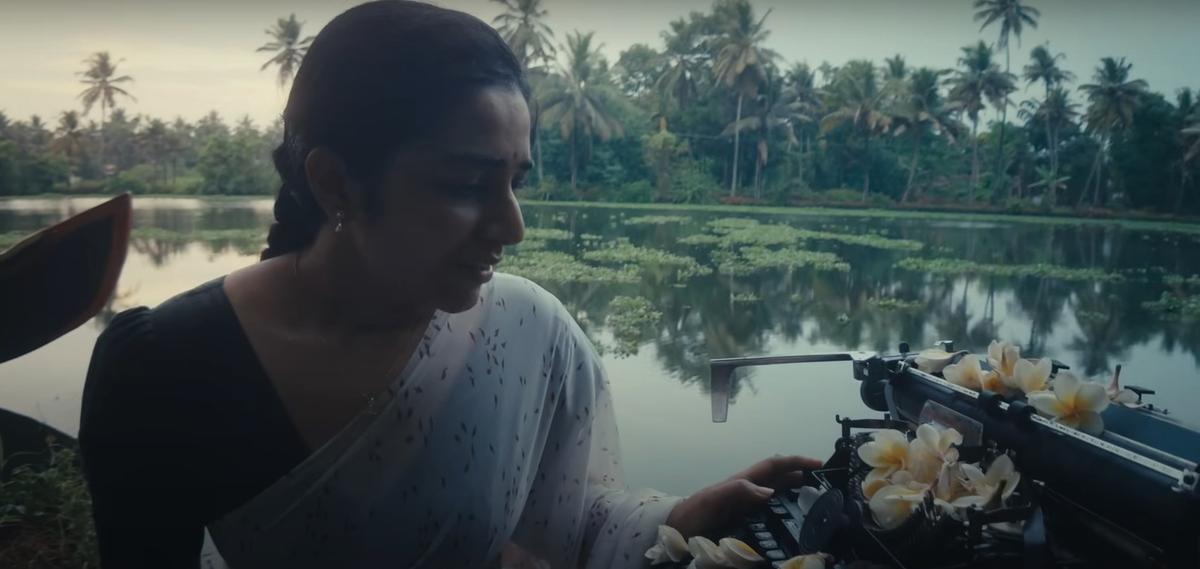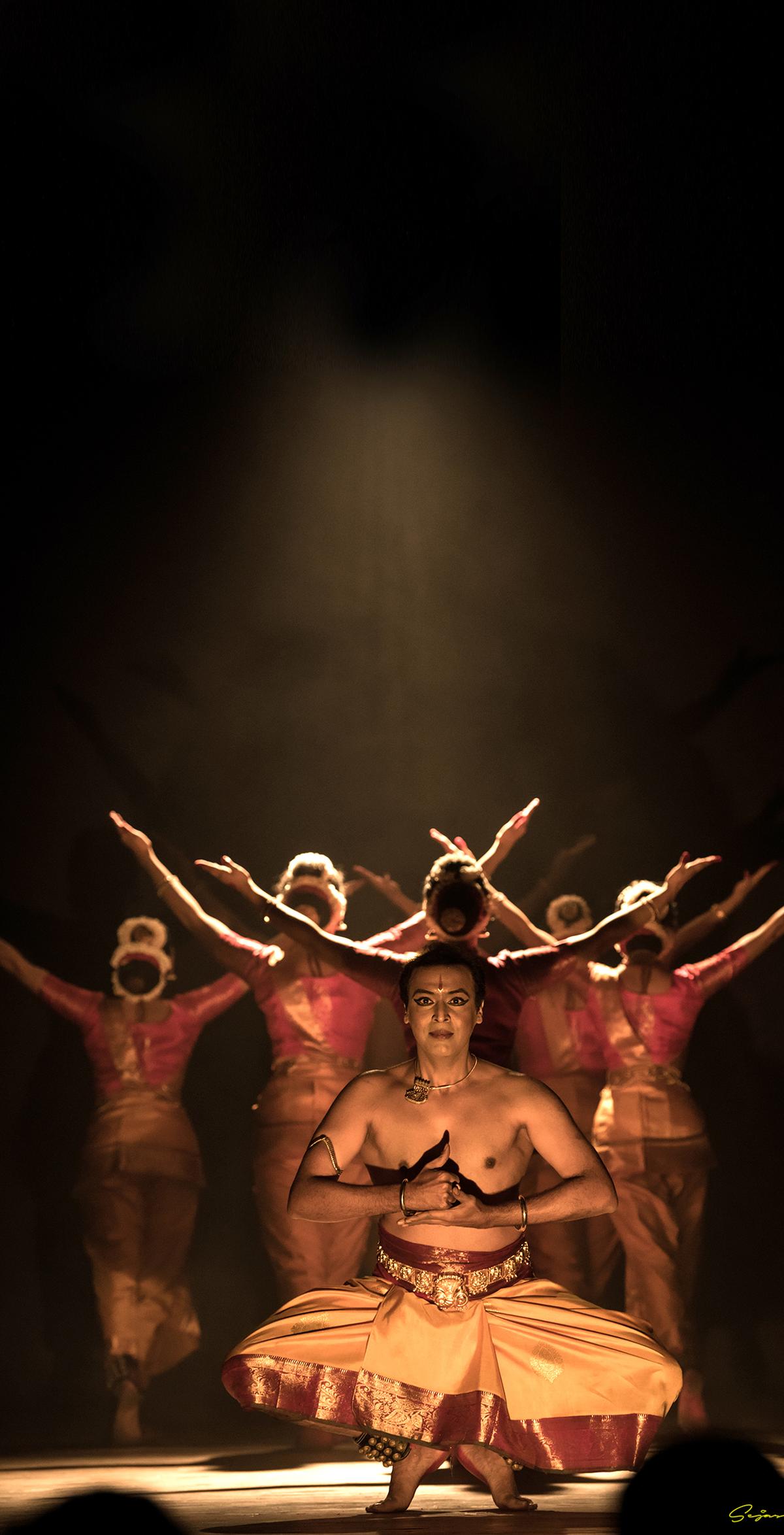Shades of mossy green, dominate artist Bindhi Rajagopal’s latest show, The Grounded Guardians: A Meditation on Mangrove Roots, on at the Durbar Hall Art Gallery. The latest show is an ode to mangroves which form a green wall around the city where it meets the backwaters. Mangroves hold the earth, they prevent natural calamities and they nurture life like a mother would, hence, Bindhi says, she has used them as a recurring motif in the works.
“This is my first solo show in a long time. First came the 2018 floods, then COVID-19… one thing after the other kept happening. The works on show are those that I worked on over this period. These are not all, just some,” she adds, laughing.
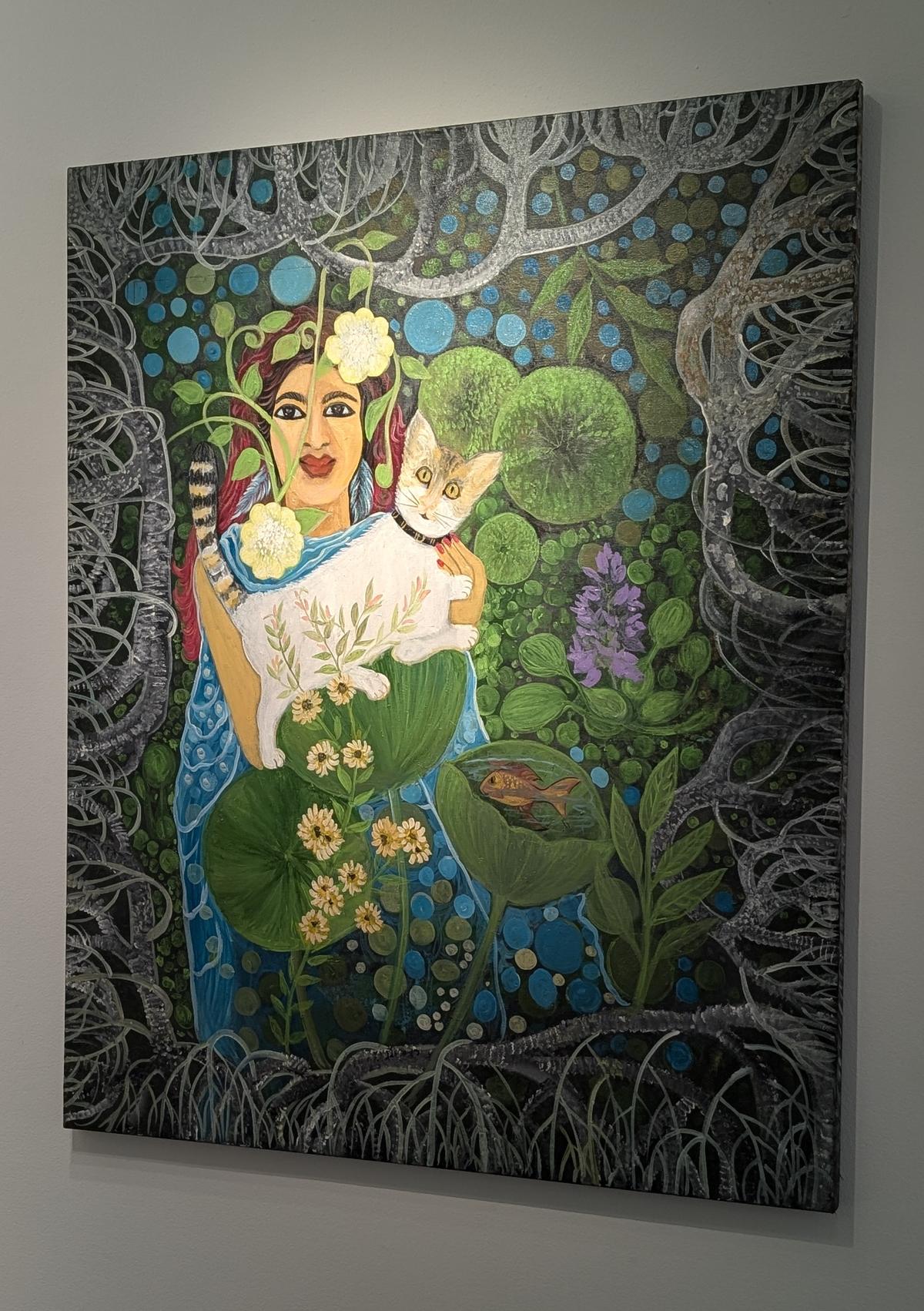
| Photo Credit:
SPECIAL ARRANGEMENT
Intertwining mangrove roots border some of the works, footprints forming the background for a couple of her latest works. The past impacts the future as much as the present. Bindhi seems to suggest that we have to be careful about what we leave behind for future generations.
“I attended a workshop by a scientist on the role mangroves play in preserving ecology, and that got me curious about them. The idea embedded itself in my mind,” Bindhi explains why she chose mangroves.
Some of the works have a woman with cats, while others have fish and algae-like life forms, all of which seem to draw sustenance from each other. The paintings reveal symbiotic relationship with nature and all its creatures, mankind included. “I am trying to say through my works how our actions impact all creation, and how we should be responsible.”
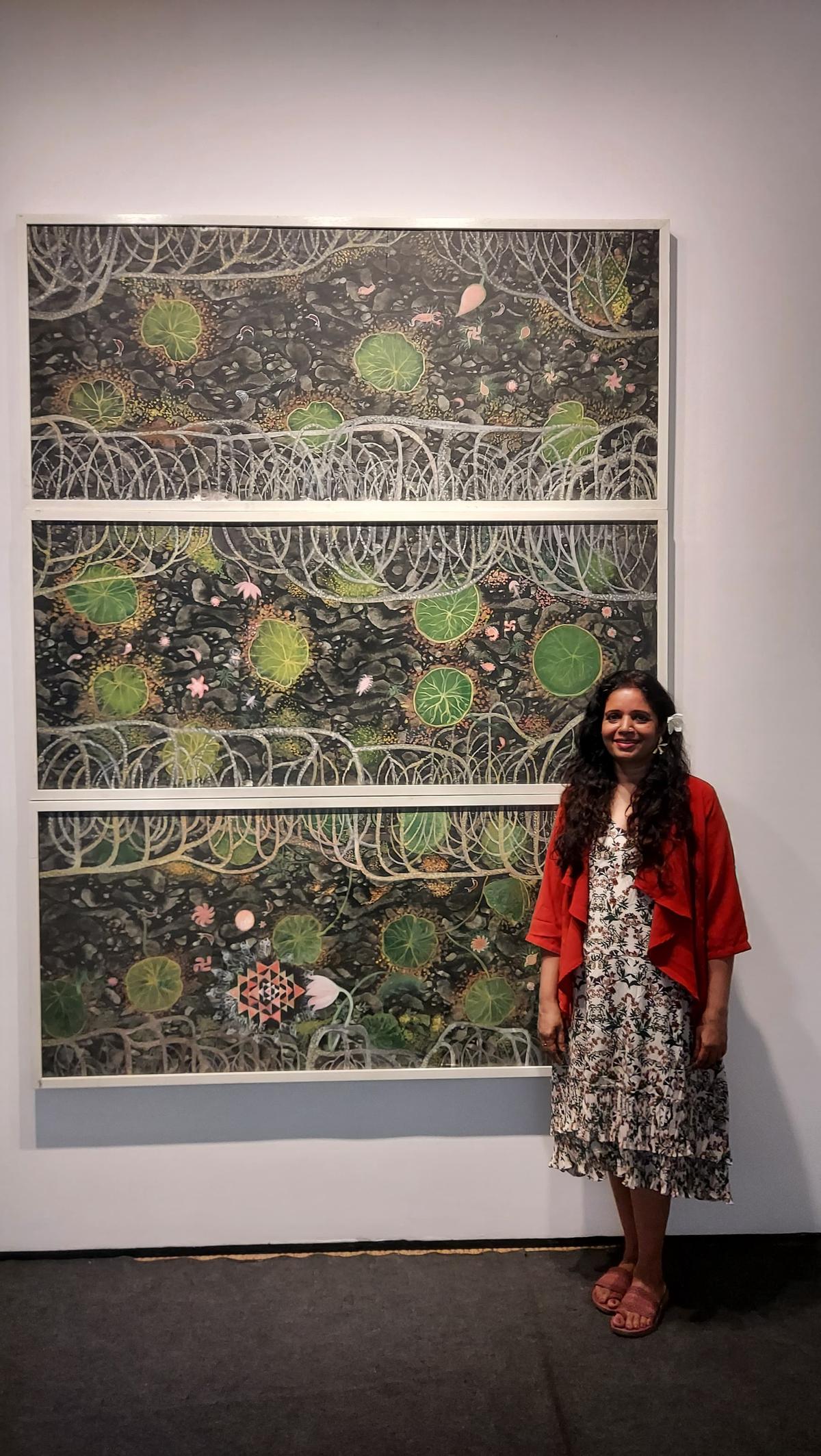
Bindhi Rajagopal
| Photo Credit:
SPECIAL ARRANGEMENT
Bindhi, an alumnus of RLV College of Music and Fine Arts, has been practising her craft for close to three decades. She held her first show in 1992 followed by one in 1998. Over the years she has been part of solo and group shows in Kerala and abroad and has also curated art shows. She has been an art teacher in a school and later, an assistant professor of visual arts in a college.
She uses visual metaphors and symbolism to get her point across. For instance, one of her paintings done during COVID-19 is actually three – a triptych, which shows three women on three different canvases. All three wear masks, and despite being together they cannot inhabit the same space. The isolation is unmissable. “Isn’t that how we felt during the pandemic? My daughters felt it intensely, not being able to step out or meet friends. That was all of us. The painting is the three of us or it could be anybody!”
The artist is preoccupied with the past, present and future, and how one impacts the other. The works on show bear testimony to it.
The show on at Durbar Hall Art Gallery concludes on April 30.
Published – April 29, 2025 03:48 pm IST




